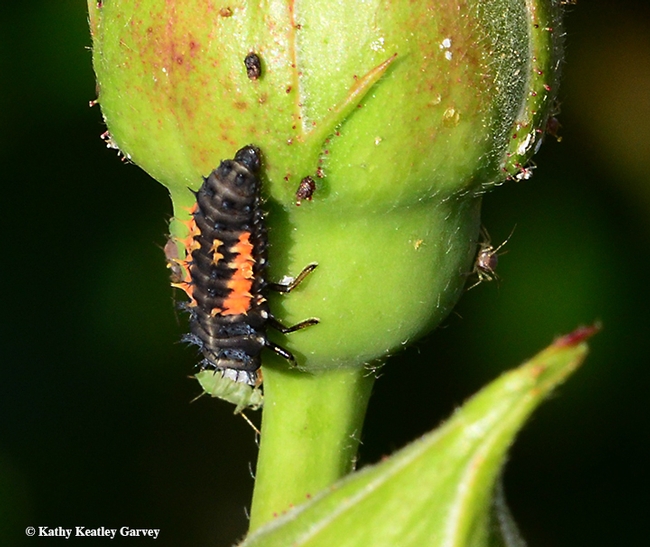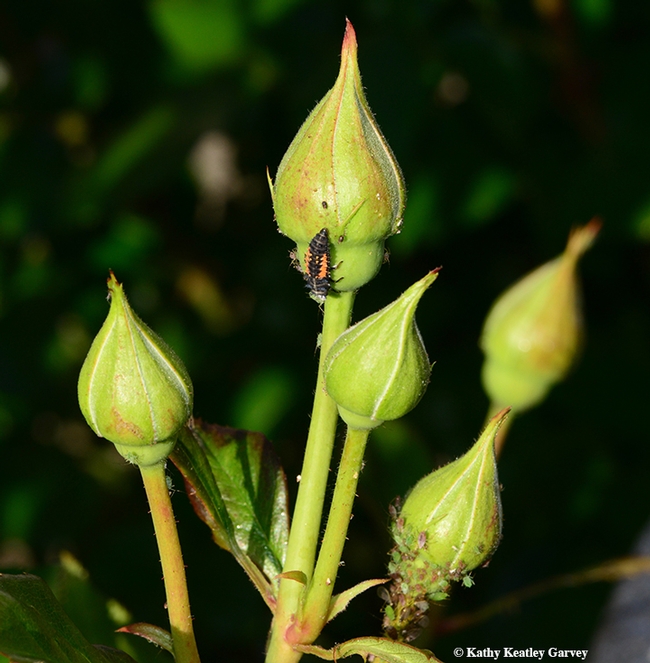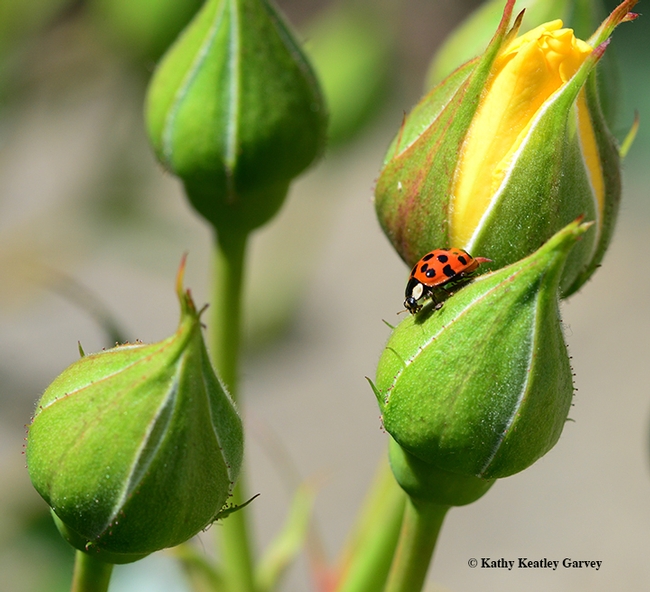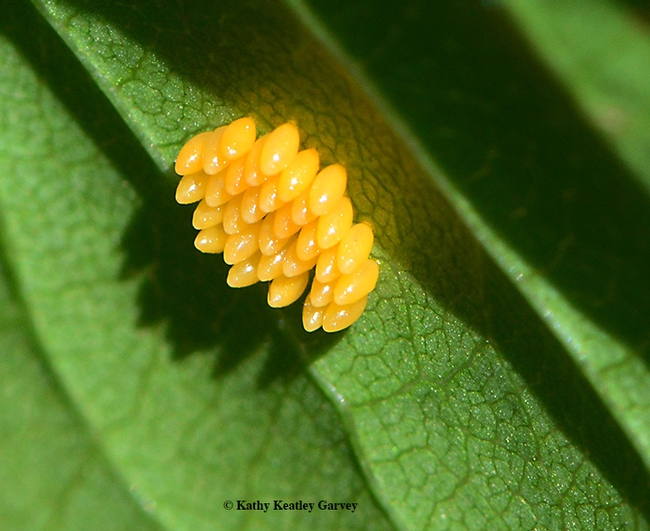Can the larvae of lady beetles (aka ladybugs) eat aphids?
Yes, they can. And yes, they do.
We spotted some lady beetle larvae on our yellow roses today and guess what they were doing? Right, eating aphids. Eating lots of aphids.
The larvae look a little like miniature alligators, which is probably why they're often mistaken for pests.
Oooh, what's that weird-looking thing on the roses? It can't be good. Kill it!
Sadly, that's what many people do.
Lady beetles (family Coccinellidae) are beneficial insects that gobble up aphids, mites, scales and other soft-bodied insects. Check out the Quick Tips on the UC Statewide Integrated Pest Management Program (UC IPM) website for more information and photos.
And, be sure to attend the 103rd annual UC Davis Picnic Day on Saturday, April 22. It's "open house" throughout the campus. At Briggs Hall, the UC Davis Department of Entomology and Nematology and UC IPM will answer your questions about insects (as will scientists at the Bohart Museum of Entomology in Room 1124 of the Academic Surge Building). (See news story.)
Bugs. Briggs. Bohart. What could be better? Well, youngsters visiting the UC IPM booth at Briggs Hall are in for a special treat: they will be gifted with lady beetles to take home. Watch out, aphids!
Attached Images:

Close-up of a lady beetle larva eating an aphid. (Photo by Kathy Keatley Garvey)

From a distance, you can see the ladybug larva and a lot of aphids on this yellow rose. (Photo by Kathy Keatley Garvey)

A multicolored Asian lady beetle prowls a yellow rose bush in search of aphids. (Photo by Kathy Keatley Garvey)

The lady beetle lays her tiny eggs in clusters beneath a leaf. These are probably the eggs of a multicolored Asian lady beetle. (Photo by Kathy Keatley Garvey)